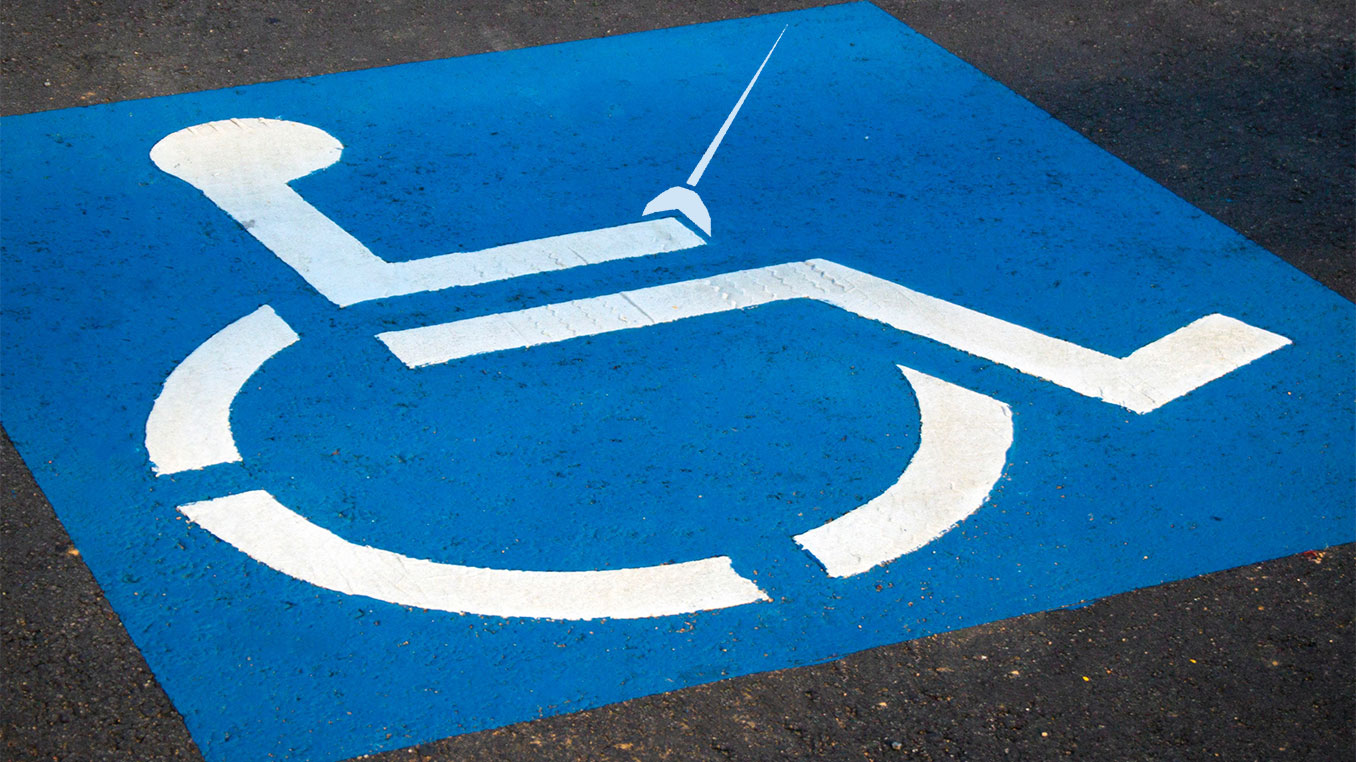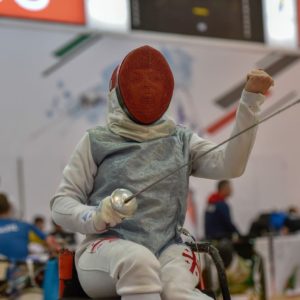Summary

Don’t just cheer on the Paralympians, get involved!
My oldest daughter is a Foil fencer. I, like most fencing parents, didn’t know the first thing about the sport before she started. Even three years into this adventure, I still can’t tell who won a point half the time. But I’m learning and trying to be supportive! I read the Parent’s guide to fencing, I’ve taken her to lessons and watched her practice. When it was announced that our home town of Charlotte, NC would host the USA Fencing January North America Cup (NAC), I agreed to take her. As a novice, I was expecting to see the three types of fencing: Foil, Epee and Saber. I knew from the Olympics that men and women compete separately and I’d heard of an active Junior as well as a Senior division. Prior to the January NAC though, I had never heard of a fencing wheelchair division. It was casually mentioned as part of a general request to the local fencing community to help volunteer at the USA Fencing January NAC, a simple sign-up genius with time slots for Registration, Timed Finals/Camera Operator and Wheelchair Pod Assistance. With no idea what I was getting into, I signed up!
WOW! What an amazing group of athletes, coaches, referees and supporters. They taught me so much in a very short amount of time and reminded me of the importance of supporting our Paralympic athletes!

A fellow volunteer showed me the ropes
I was shown how to secure the athletes’ customized fencing wheelchair into the competition fencing frame, how to adjust the distance between the athletes based on the referee’s direction and how to connect the Lamé to the scoring system. Whereas standing fencers use Lamés in Foil and Saber to define a target area, in seated Epee fencing a Lamé is used as a skirt to define the off-target area. After all was setup and double checked, I got to see my first seated bout.
As a standing fencer, my daughter has been taught to use her core and ‘DON’T LEAN’, but the first thing the seated fencers did was lean away. They lunged and retreated using just their upper bodies. They were using every ounce of their core, just in a very different way. They were so fast, so active that the platforms that they were secured to moved!
Customized “chairs”
My next surprise was realizing that several of the athletes did not need a wheelchair for mobility. Some had other assistive devices to aid their walking, but some could pass as “able bodied”. The contrast in abilities within a single division was truly surprising to me. Track and Field Paralympic athletes with physical impairments compete in over 25 classes while fencing has 2 (Class A and B). Most events don’t have enough athletes in either class so they are often combined, meaning that I saw a bout between an athlete that was able to use his fencing chair for stability while securing it into place himself, compete against an athlete that needed to be pushed into position and had limited mobility of both arms. While I’m sure you can guess the victor, I was most impressed by the comradery. The victor kept commenting about his opponent’s improvement since their last bout, what targets he wasn’t able to get to and how he had to apply new tactics to win this time. It was a show of praise, support and humility that is rare in athletics.
As we progressed through the pool, I got to know each individual fencer and their personal equipment a little better. These chairs are not designed for mobility. They are designed for fencing! Fencers that rely on wheelchairs for mobility found it was easier to request that the volunteers move them to their next bout, or transfer them to their everyday chairs and push their fencing chairs in front of them. For right handed fencers, the right side is clear of obstacles with the left and lower body designed for leverage. The left “arm rest” transformed to provide a solid grip for lunging and pulling back in a fast retreat. If a fencer had a stronger leg, their foot could be securely bound to the chair. I saw one that I think was a snowboard binding mounted to the chair. As with any sport, their equipment was customized to get the most for the athlete!
Comradery
As the event continued, I witnessed not only fellow athletes supporting each other but coaches and referees as well. I watched one coach, who I was told was there for a female Olympic hopeful, giving some hints to a male fencer that was clearly out-matched by his current opponent, to the minor jest of his opponent. Referees would help fencers setup, position their Lamé’s and joke with the athletes. My dismay after one of these encounters clearly on my face, a parent voiced, “Oh yeah, there is a comradery here. Last night we were in the lobby of our hotel talking about dinner plans and a ref asked if he could join… That would just never happen with those standing fencers.” As with so many in the accessibility community, despite the different abilities or struggles, there is a shared bond.
What was also apparent was that this comradery is not limited to seated fencing. I was told multiple times about the benefit to standing fencers’ infighting (close combat) skills if they practice seated. The message was clear – seated fencers aren’t charity cases, asking for or needing help. They are athletes that can help train and improve as they work out with other athletes!
It wasn’t until I was doing research for this piece that I realized how rare it is to see seated fencing. USA Fencing hosts roughly 8 major events per year. The Wheelchair division is included in about 3 of them.
“Only spectator sport where you break a sweat!”
My next favorite quote from the day came after I had to remove my jacket and the volunteer coordinator yelled over “only spectator sport where you break a sweat!” It was true. I had a smile on my face as I was able to help an athlete do their best. Volunteering at the January North America Cup was a personal reminder of why I love being part of the accessibility community. In the three years my daughter has been fencing, I never thought to research Paralympian fencing. I should have asked more questions, done more research, looked for more opportunities and known that there was a community out there.
Getting involved feels good! I hope that by reading this, you learned a little about a sport few know about. But that you also think about other aspects of your work or life that you could ask more questions about, do more research about, and see how you could connect into other parts of the accessibility community.